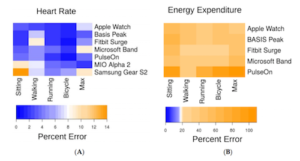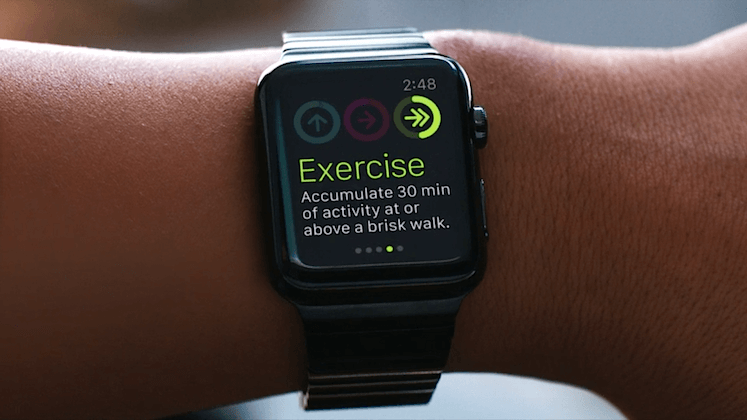A new study out of Stanford measured the accuracy of seven wristband activity monitors and found that while six out of seven wearables measured heart rate accurately, none of them were able to accurately measure calories burned.
The study involved 60 volunteers from a larger pool, selected specifically to represent a diverse set of subjects. These participants included 31 women and 29 men of various skin color, body type, etc.
Participants were asked to wear these various wrist-mounted devices while undergoing tasks such as walking, running, cycling, and sitting.
How fitness trackers are good…
The fitness trackers examined in the study include:
- Apple Watch
- Basis Peak
- Fitbit Surge
- Microsoft Band
- Mio Alpha 2
- PulseOn
- Samsung Gear S2
The devices in this study did a fairly good job of monitoring the participant’s heart rate. In fact, six of the devices measured heart rates to under a 5% median error rate during walking and cycling while the Samsung Gear S2 scored a slightly less stunning 5.1%.
A 5% variance is something medical professionals can work with. “For a lay user, in a non-medical setting, we want to keep that error under 10 percent,” Anna Shcherbina, one of the authors of the paper, said.
…and how fitness trackers are bad

Out of the seven devices tested, the most accurate one was off by 27.4%. That honor went to the Fitbit Surge.
The least accurate device of the bunch was the PulseOn which with a stunning error rate of 92.6%.
This study shows that fitness trackers, as much as we rely on them to give us at least mostly accurate data, may not be giving us a true account of our activity at all. Users rely on these devices to let them know when they have hit their goals on steps, heart rate, and caloric burn.
If this research is accurate, at least one of these three measurements should be taken with a grain of salt.











